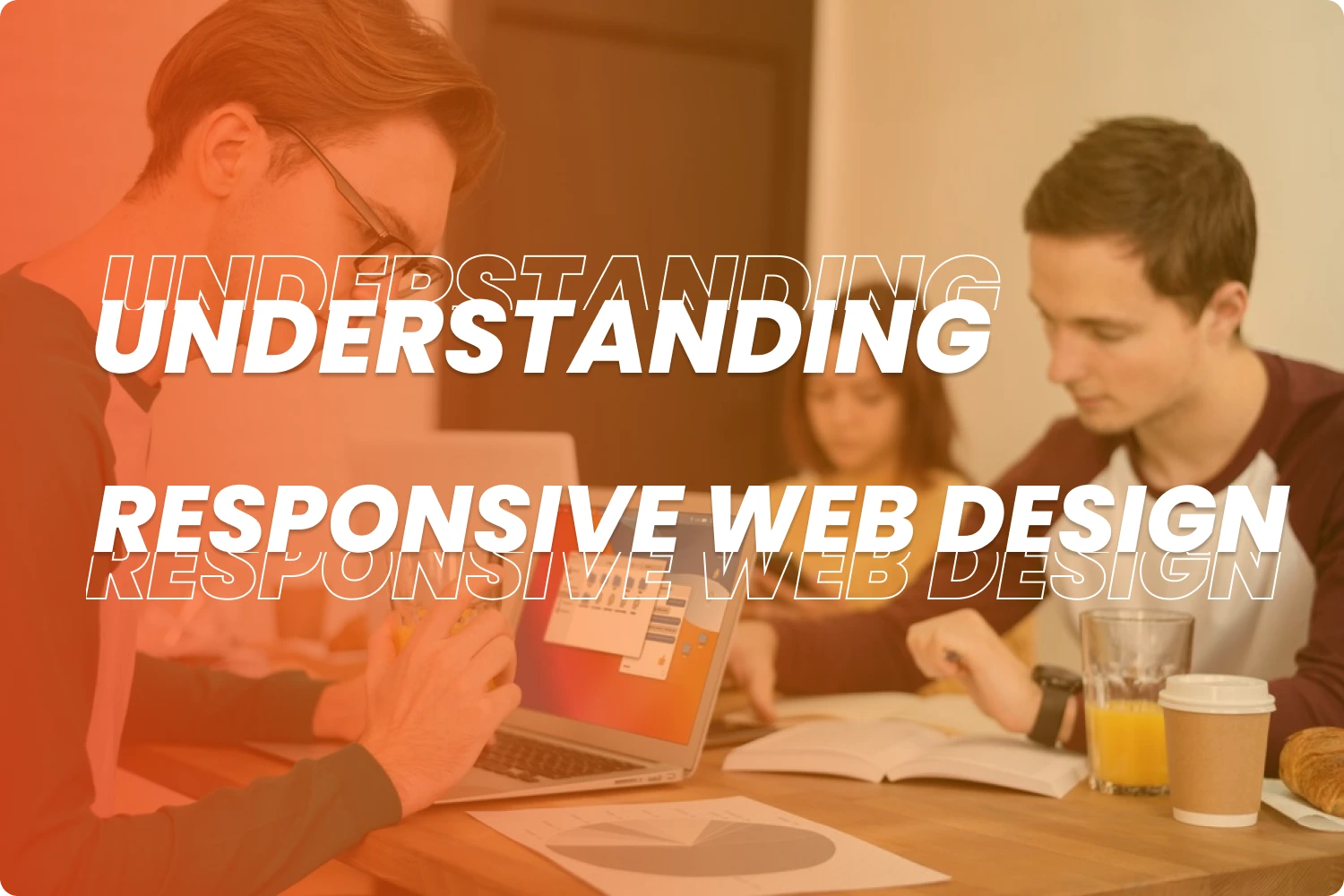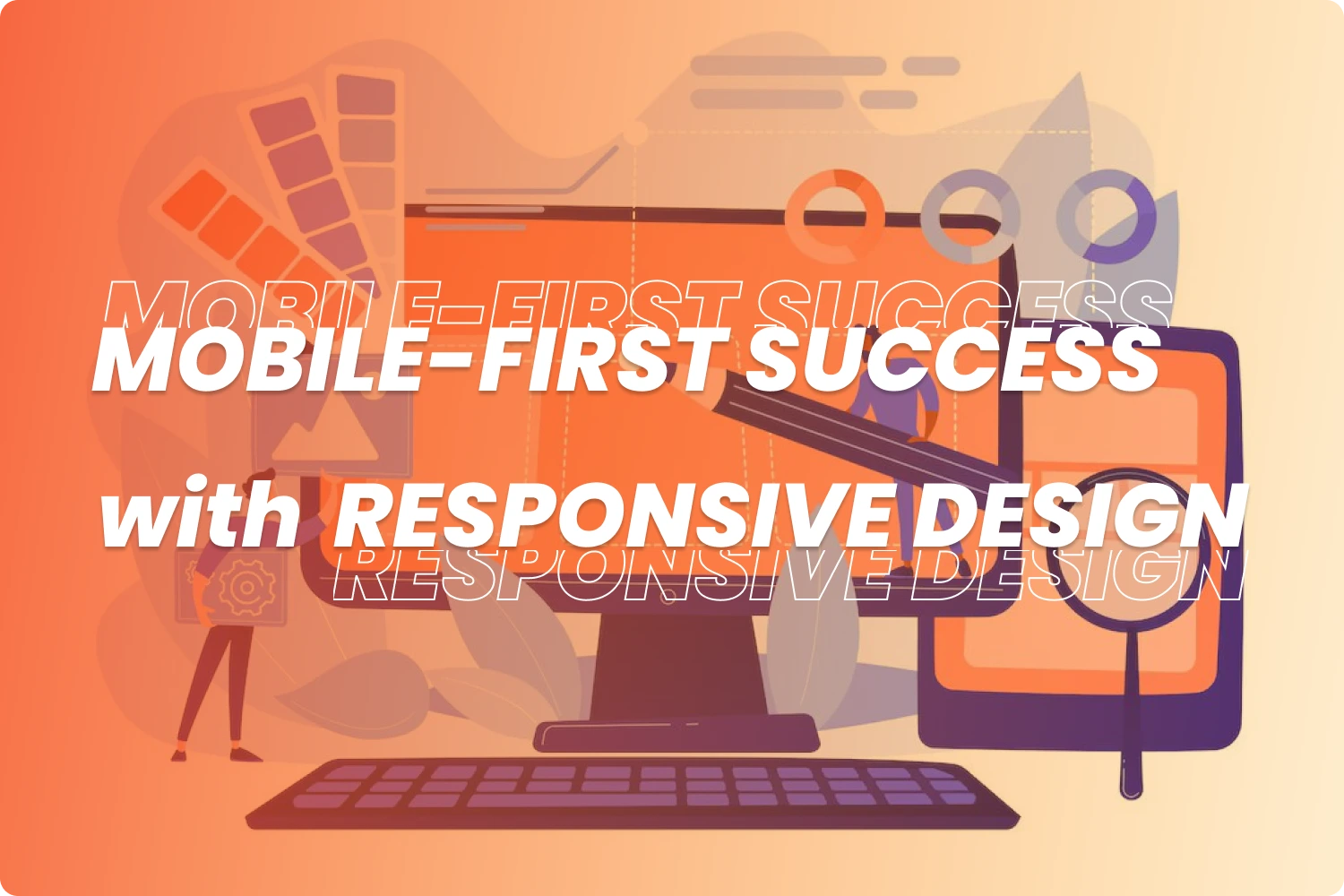THE IMPORTANCE OF
RESPONSIVE WEB DESIGN
The Importance of Responsive Web Design in Today’s Mobile-First World
Understanding the importance of having a responsive web design is pertinent in today's world of smartphones and tablets. It is more targeted towards understanding the dimensions of the device and composing the site accordingly. Through this transformation, you are also helping to maintain the quality of service from any device used.
That is exactly what we are going to discuss in the article below, the critical role of responsive web design in the success of businesses. From benefits, challenges, and best practices, it is all about creating a responsive website design that caters to the needs of today's mobile-first world!
Understanding Responsive Web Design
Website layouts and designs have undergone a drastic development in the past few years. One of the ways to carry out website development is to create responsive web designs. But what is a responsive web design? Simply put, it is the feature allowing a website to adjust itself according to the resolution of the device in use. In the past, you would have seen companies operating two separate websites, one for the desktop and one for the mobile phone. No more because that has been replaced by responsive web designing.
How it Works
Techniques like fluid grids, flexible images, and CSS media queries are what makes a website design responsive. Not only do they dynamically adjust the website's appearance, but they also improve its functionality keeping in view the screen size of the device. So, both the content and the other elements of the web page automatically resize and reposition themselves as per the specific dimensions of the device. This means the user can navigate with optimal ease and improved readability.
But that's not all; a responsive website is the building block for businesses where they can create a website that's visually appealing. But if you think that aesthetics compromises functionality and user-friendliness, you're wrong! With responsive web design, you enhance the functionality and user experience, whether it's a smartphone, tablet or any other portable device.
The Mobile-First Landscape
The meteoric rise of mobile phones is not hidden from anyone. From sourcing information to the essence of interacting with technology, smartphones have transformed it all. They have gone from being a device that was used on rare occasions to becoming a must-have. From communication and entertainment to work and education, they offer it all.
Around 54% of the world population now relies primarily on mobile devices for internet access. Hence a mobile-first approach is the only way forward for businesses and organisations. Without this shift, you're looking at a certain defeat against your market competitors.
Google's Mobile-First Indexing
With mobile phones being the primary digital device being used, Google has shifted from an all-encompassing indexing to a mobile-first indexing. What that means is that when it comes to rankings and indexing, Google primarily uses the mobile version of a website's content. Businesses having websites that are not mobile optimised are sure to incur losses of traffic and visibility on the search engine results.
Hence, prioritising mobile-friendly web designs is the necessity of the hour. To improve the quality of the search feature, the company has introduced a new policy that motivates responsiveness in designs.
The Benefits of Responsive Web Design
When it comes to thriving in this mobile-first era, organisations need to prioritise responsive web designs. Keeping in view the over-reliance on mobile devices, let us now understand why responsive web designs are so important:
Improved User Experience
Web designs are your way to interact with users so you should never have layouts or elements that don't match device sizes. Every business organisation wants a seamless and consistent experience for users when it comes to their websites. A user should never have to zoom or scroll or pinch a web page to navigate content. With responsive designs, you get a result that's more intuitive and enjoyable, which ends up in increased user satisfaction and more traffic for you.
Increased Mobile Traffic
When you know users and potential customers will access your websites through mobile phones or tablets, why not give them the most memorable experience. That's the only way to grow your reach. When a user finds it easy to navigate your website, they will inevitably stay longer, explore more content, and ultimately take desired actions, such as making a purchase or signing for the newsletter.
High Conversion Rates
These are processes which are aimed at raising the number of sales that are made through the website. But nothing says success like responsive and user-friendly websites. The more relevant information visitors to your site can find with ease, the higher the chances they will become paying customers. You will understand what I mean after you have had a single experience on your website. Users, who had positive experience due to responsive design, kept returning to the websites, recommending it to other users, and hence raising the conversion rates.
Better SEO Performance
Did you know that a responsive web design can also improve your website's Search Engine Optimization (SEO) performance? As explained earlier, Google and other major search engines are now using mobile-first indexing, meaning if your website isn't responsive, it won't rank in the search engines and won't appear in top searches, regardless of how optimised your keywords are. So, if it's organic traffic you're after, or a wider range of audience, the secret lies in a responsive design that leads to faster page load times, which is another important factor in SEO rankings.
Cost and Time Efficiency
Building one responsive website is better than having two websites, one for laptop screens and another for mobile screens. To maintain a responsive website is generally more cost-effective and time-efficient than managing separate mobile and desktop versions. Let's say you have two separate websites, and you are tasked with the painful attribution to keep both of them, all the efforts and budget are wasted. The solution is instead of developing two different websites is to come up with one good responsive layout that can be modified on any device. Hence minimising the cost on both development and maintenance.
Think of the time and resources you're saving by using a responsive web design. Save time and focus it on other aspects of your business.
Future-Proofing
On one hand, you want the best experience for your users now. On the other hand, you also want a website design that can be scaled with time. With a responsive web design, there are no worries about falling behind in the current digital era. The problem can only be solved with a responsive design which will allow for your website to be expanded to use new devices that have not come into the market yet.
Considering that the end goal is an improved and steady user-interface, the fate of the developments made in the website might be in jeopardy. Not with a responsive web design; you can always incorporate timely improvements on the web pages without the hassle of undertaking large scale web page renovations.
Best Practices for Responsive Web Designs
It is simply not practical to go ahead and use responsive web designs without appreciating what practices need to be applied. These will ensure your website is not only responsive but also optimised for all devices.
Mobile-First Approach
Over the last years, one cannot help but have envisioned attending to two or more sites and the complete deluge of resources exacerbated. The answer is only one standard design in responsive approach which can be adjusted on any gadget. This will result in low cost.
Business should not take on a one size fits all web design for every device instead it is appropriate to use the mobile first approach. It will enable you to identify the basic features and elements which will make the site usable across all types of handheld devices. Why bind yourself in avoidable complications when it is possible to concentrate on the most used and hence start the design from there?
Flexible Grids and Layouts
To make sure your responsive web design fits seamlessly to different screen sizes, you need to use flexible grids and layouts. What this means is you need to employ relative units like percentages rather than fixed units like pixels. Hence, they will maintain a visually appealing and functional layout on all devices. Achieve greater flexibility when you wish to adjust the layout based on screen width and orientation.
Responsive Images and Media
To ensure fast loading times and a visually appealing experience on all devices, you need to not only optimise text content but images and media too. It is depending on how far we require the features of the websites that some features speedily prepare for and maximise the smallest min height of the webpage, especially on images. With these techniques, you will not have to worry about any loss of image quality or layout problems.
For responsive image formats, the best image format would be WebP. The file sizes are also reduced, and performance is increased. If there are any videos on your web page, these will also need to be optimised so that they can run smoothly and also fit different screen sizes. These may seem as if it might be quite a hassle, however with the right web service provider, it can be accomplished.
Testing and Validation
Creating a responsive web design is one thing and the other issue is how do you verify that your websites work as they are supposed to on all devices and on any screen resolution? This is where testing and validation comes in. Your web development service provider where they take your design and put it through different tests carried out this procedure. They will use various devices and browsers to check the layout delivery, the functionalities of the layout, the performance of the layout and its interaction. Of prime importance, however, will be to investigate the issues of page load, imagery, and even some structural elements when viewed across different sized graphics screens. If you want to go a step further, there are browser emulators or real-device testing tools that simulate various user experiences.
Content Prioritisation
A responsive web design isn't all about the layout. A large section of it has to do with users finding the most important information and features. So, businesses must prioritise content for mobile users and place it above the fold. That way, it will be easily visible without requiring scrolling. Too many features and elements can also affect the performance of page load time or present challenges when using small screens to navigate through the websites.
Challenges to Responsive Web Design
- Cross-browser compatibility: the developers are supposed to design the application in a way that the application will work in all the browsers without altering the basic application features.
- Complex design implementation: intricate designs are not easy to design and implement. Without the help of a web development services provider, you are going to struggle big time.
- Performance optimization: When setting up a responsive web design, your performance optimization will take a big hit. There is a delicate balance which can be difficult to achieve.
- Testing and Validation: carrying out testing by yourself can be difficult to manage especially if you don't know what you're looking for. So, when you do wish to have your website mobile optimised, always seek the professional assistance of web designing companies to have their work done.
Final Thoughts
Mobile optimised websites are a need of the hour and it's safe to say that responsive web design is the foundation and the most important aspect of your business in today's digital landscape. In a world where mobile phones are literally everywhere if your websites aren't optimised and responsive, you are getting nowhere as a business organisation.
Ready to take your website to the next level? In today's mobile-first world, a responsive design isn't just a nice-to-have—it's essential for driving traffic, improving SEO, and converting visitors into loyal customers. Let us help you create a visually stunning, mobile-optimized site that works flawlessly across all devices. Don't lose business to competitors with outdated designs.
Contact us today and discover how our expert mobile design services can transform your online presence and grow your business!





